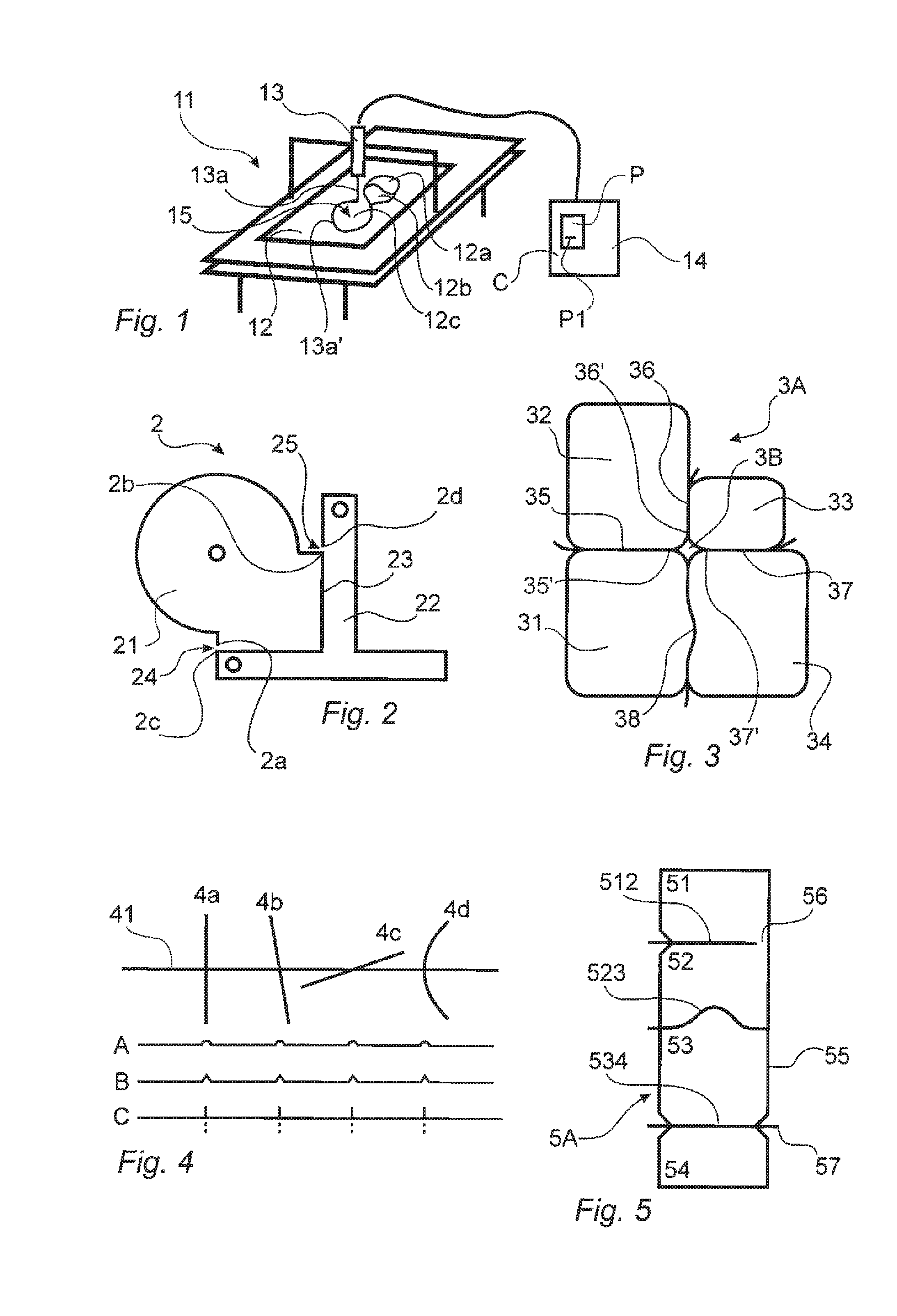Controlling Rules and Variables for Cutting
a control rule and variable technology, applied in the direction of welding apparatus, manufacturing tools, laser beam welding apparatus, etc., can solve the problems of bringing detail prices, ineffective methods for part placement, and huge waste, so as to optimize machine cost, reduce material waste, and reduce the effect of material was
- Summary
- Abstract
- Description
- Claims
- Application Information
AI Technical Summary
Benefits of technology
Problems solved by technology
Method used
Image
Examples
Embodiment Construction
[0080]The present invention will now be described with reference to FIG. 1 illustrating a method for machine cutting several parts 12a, 12b, 12c out of a piece of material 12 using a beam cutting technology. The schematic illustration of FIG. 1 shows that a cutting device 13 is movable and the material 12 is fixed, however, it should be understood that the present invention can also be implemented in a system where the cutting device is fixed and the material is movable. The invention relates to controlling the relative movement between the material 12 and the cutting device 13 regardless of what is moving and what is fixed.
[0081]In the description of the present invention certain terminology might be used that implies that one specific beam cutting technology is described, but it should be understood that the present invention relates to any beam cutting technology and the skilled person will understand how a feature described with a terminology specific for one beam cutting techno...
PUM
| Property | Measurement | Unit |
|---|---|---|
| size | aaaaa | aaaaa |
| thickness | aaaaa | aaaaa |
| size | aaaaa | aaaaa |
Abstract
Description
Claims
Application Information
 Login to View More
Login to View More - R&D
- Intellectual Property
- Life Sciences
- Materials
- Tech Scout
- Unparalleled Data Quality
- Higher Quality Content
- 60% Fewer Hallucinations
Browse by: Latest US Patents, China's latest patents, Technical Efficacy Thesaurus, Application Domain, Technology Topic, Popular Technical Reports.
© 2025 PatSnap. All rights reserved.Legal|Privacy policy|Modern Slavery Act Transparency Statement|Sitemap|About US| Contact US: help@patsnap.com



